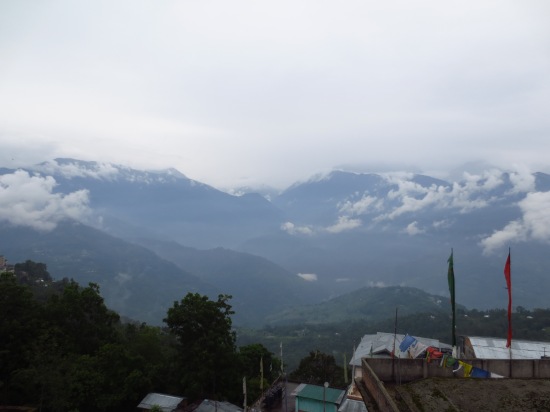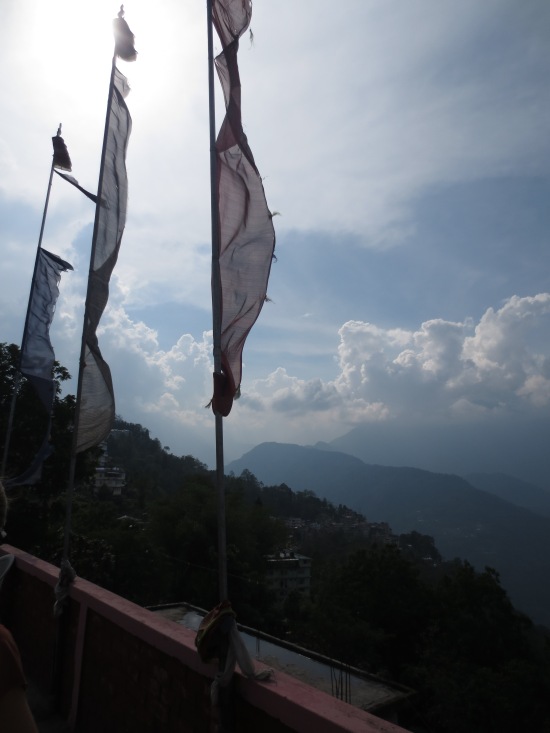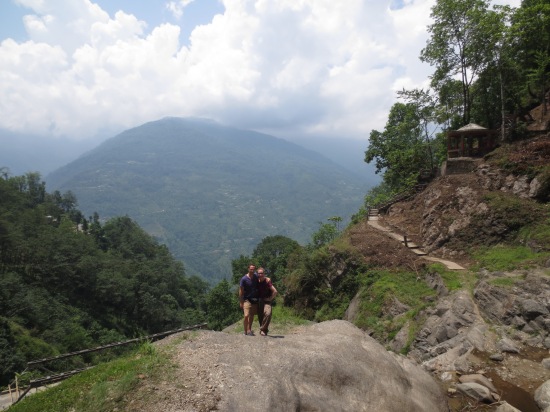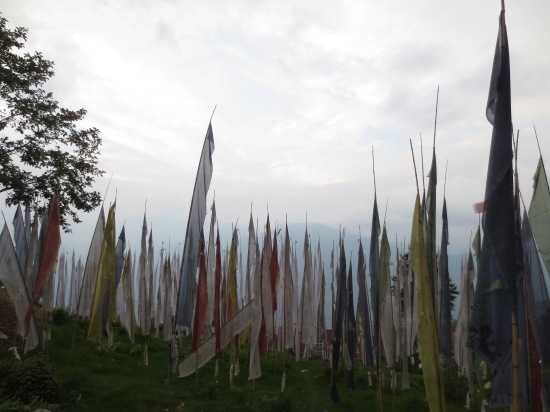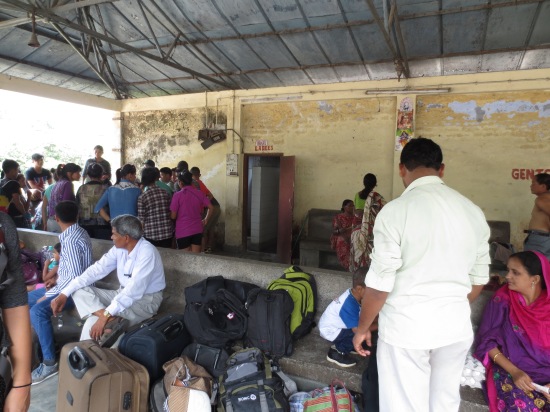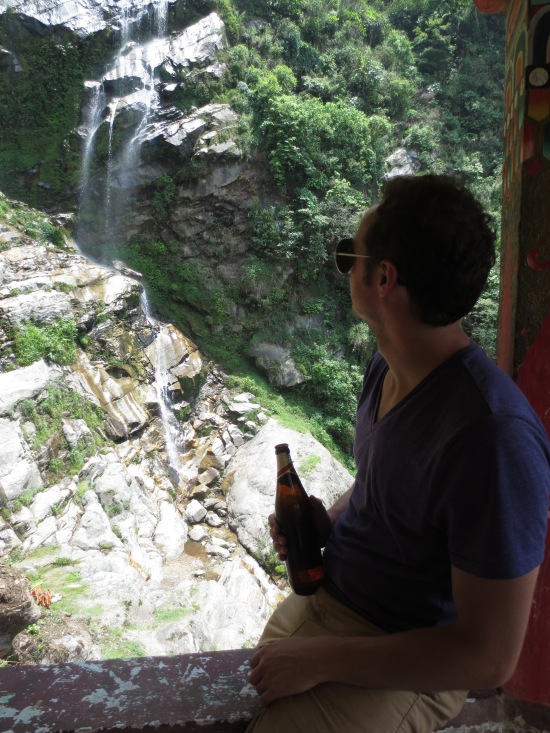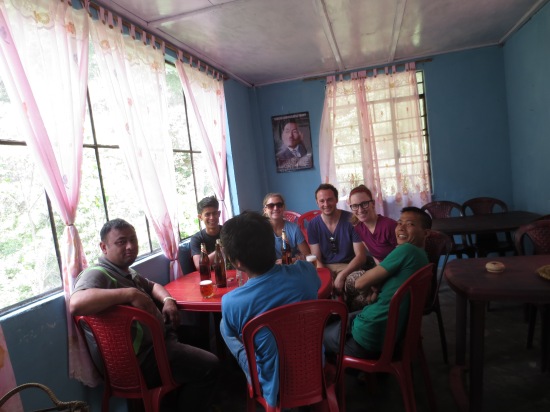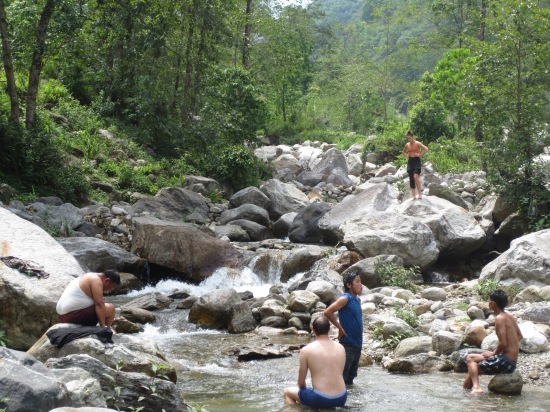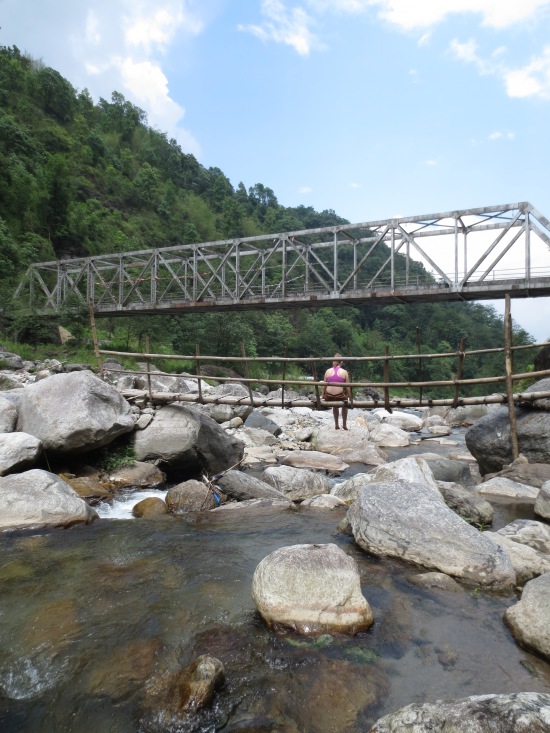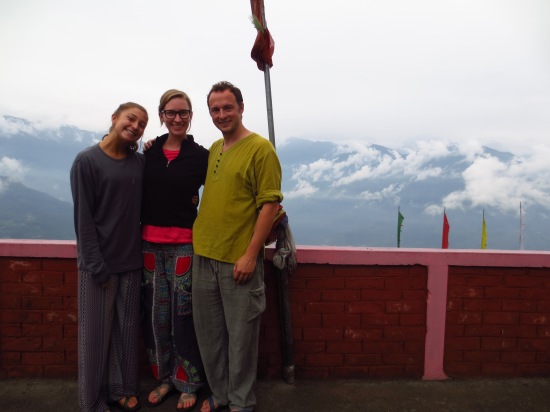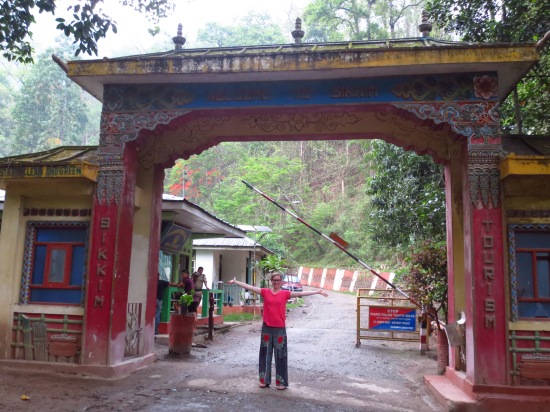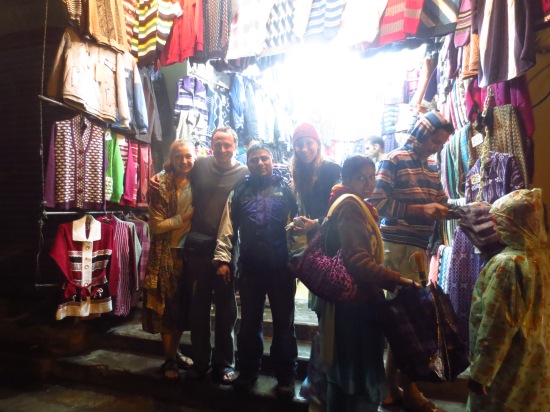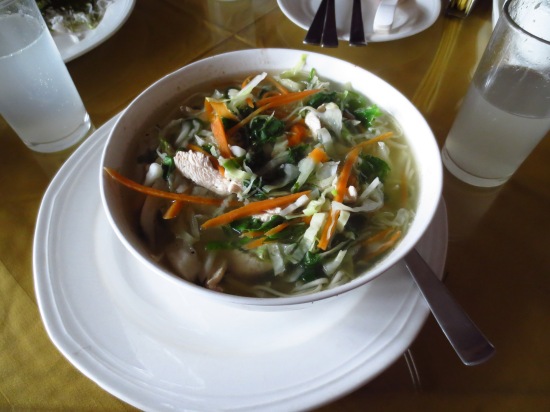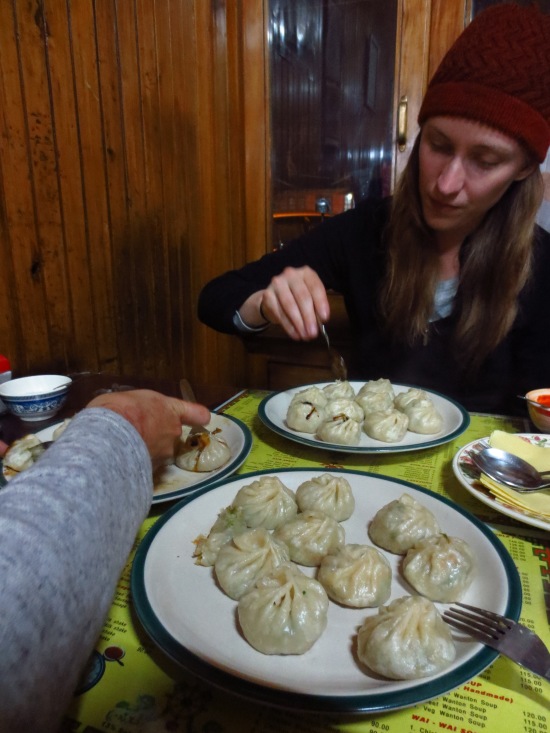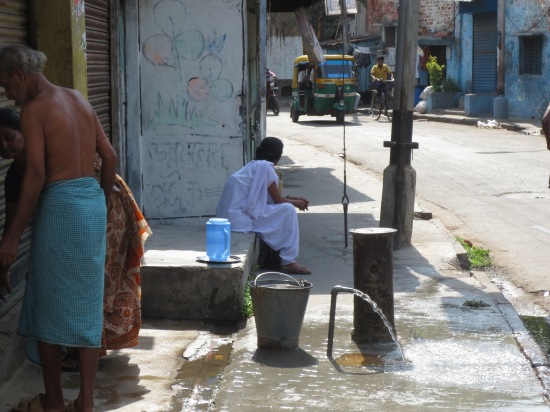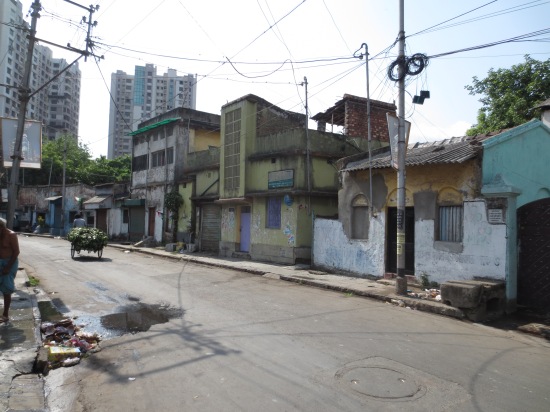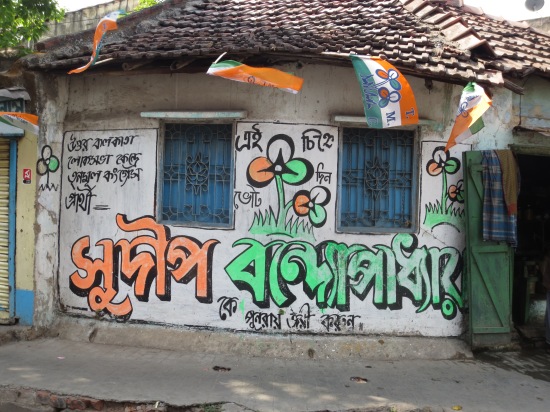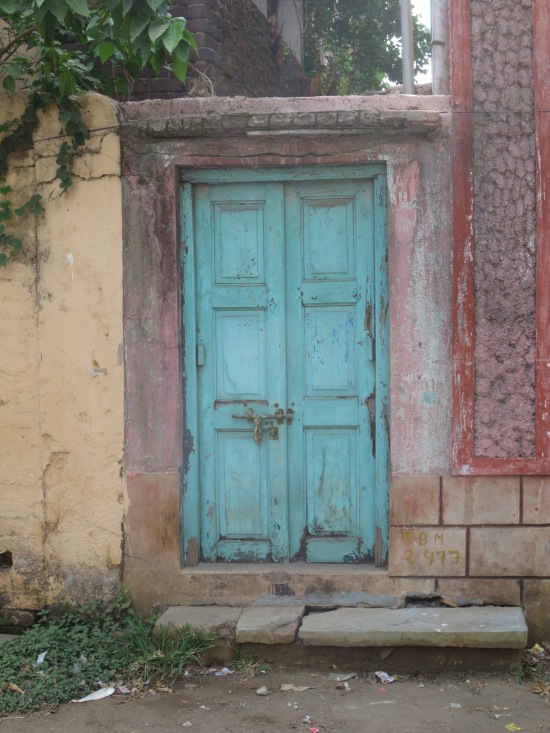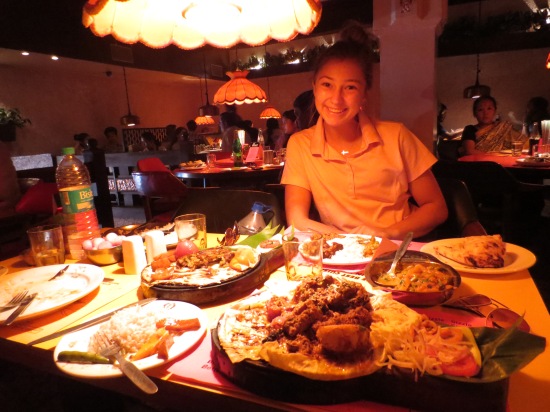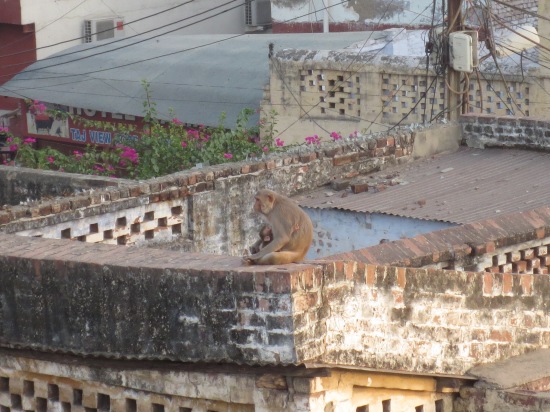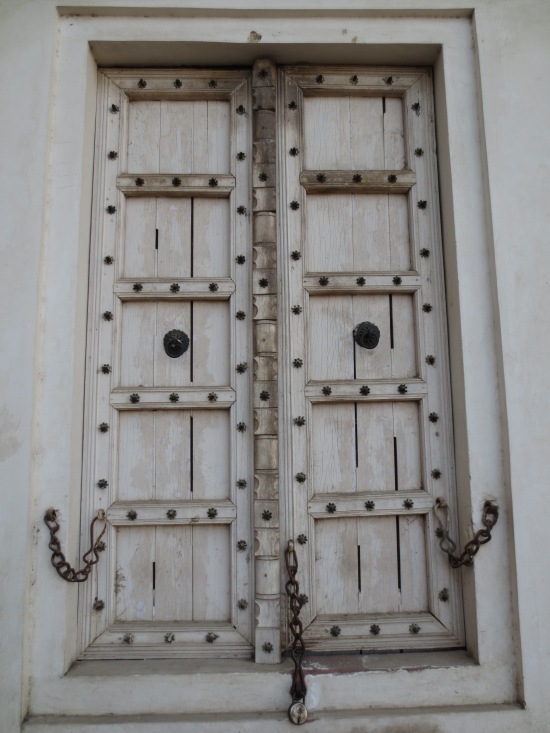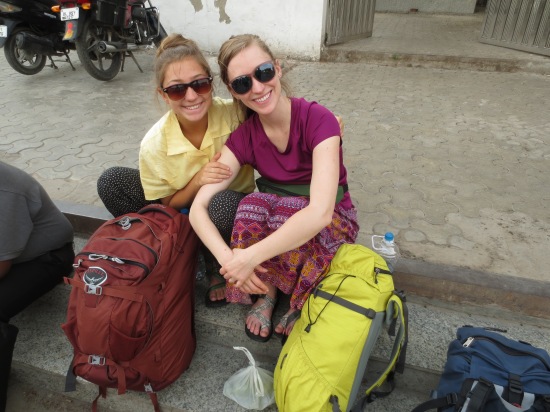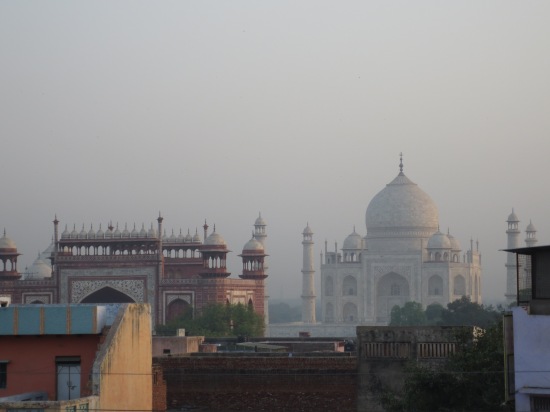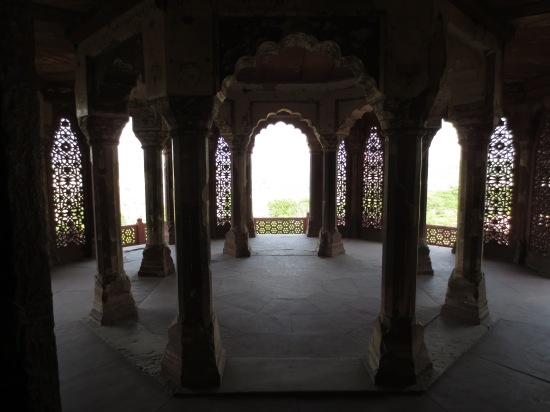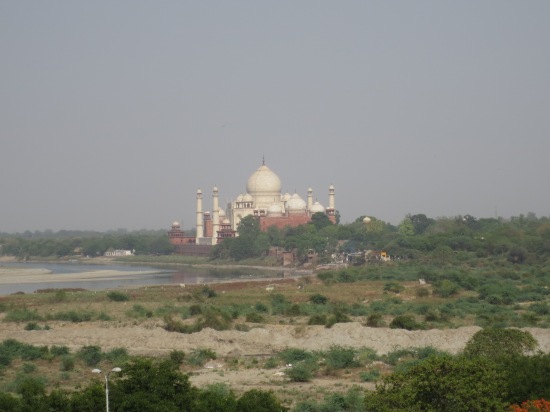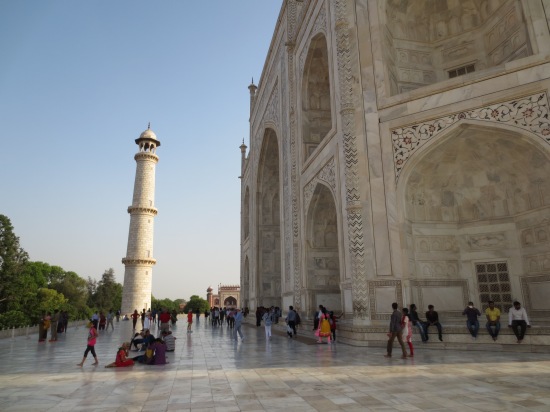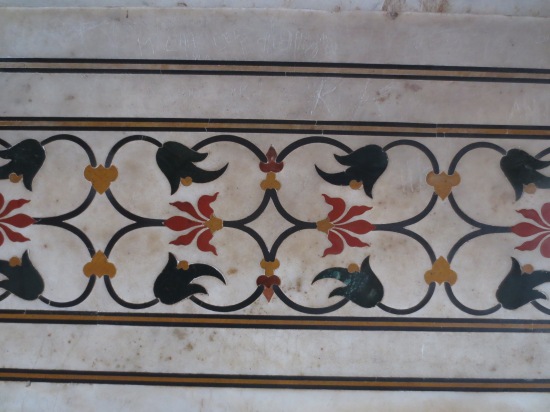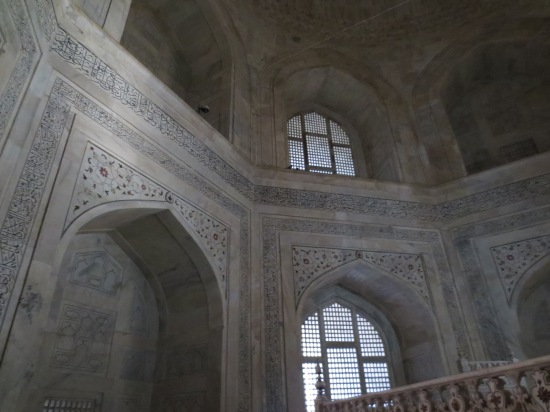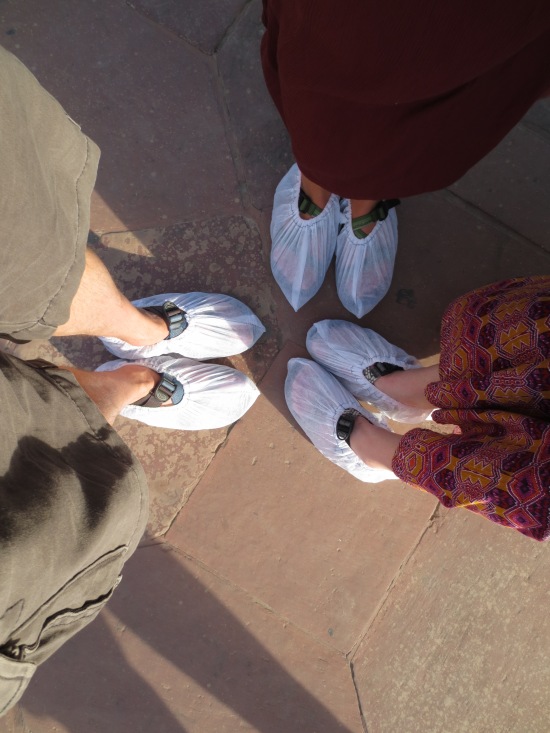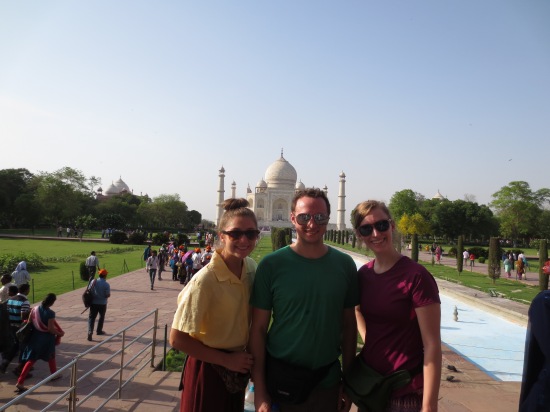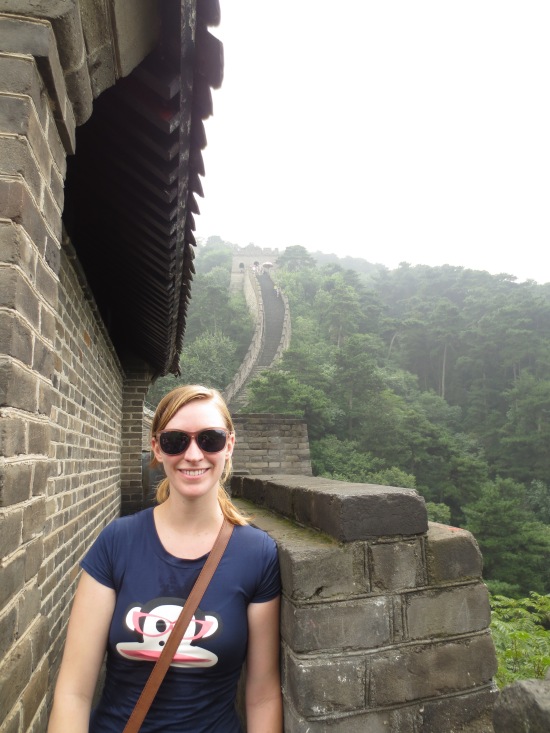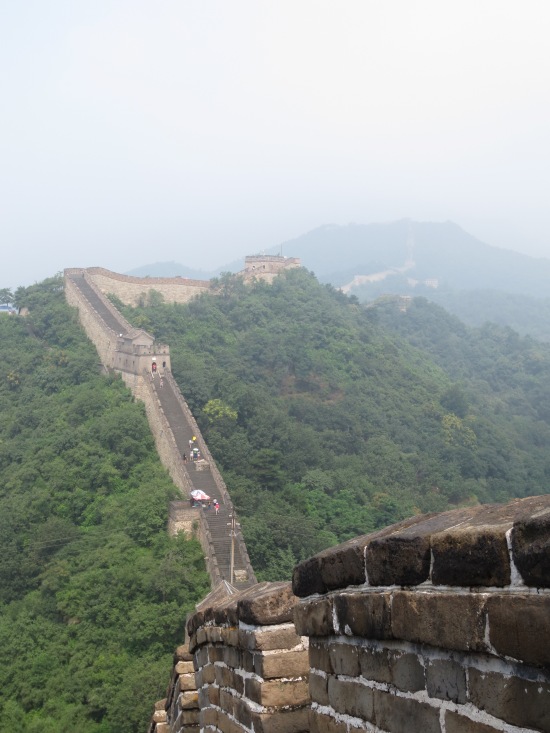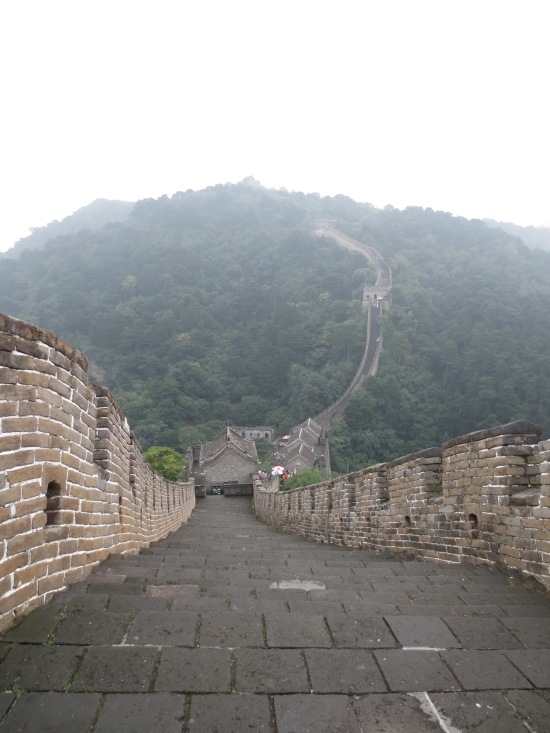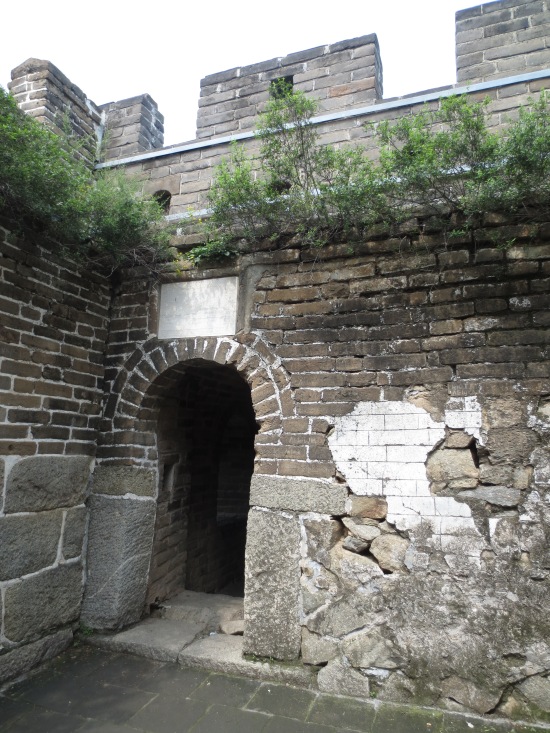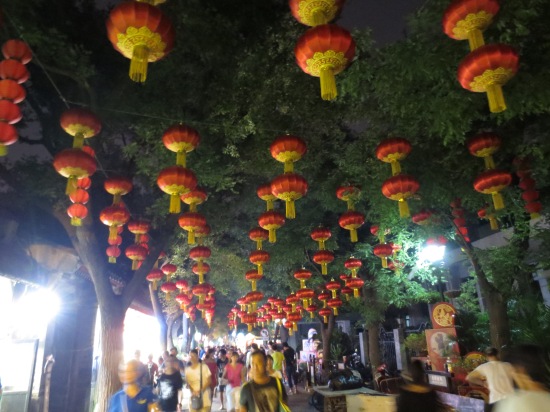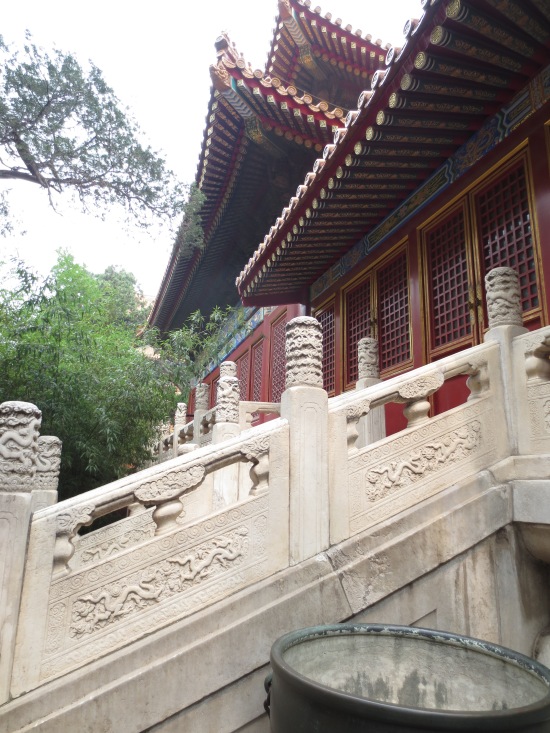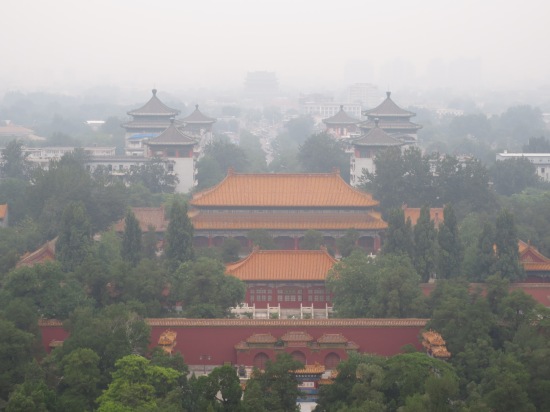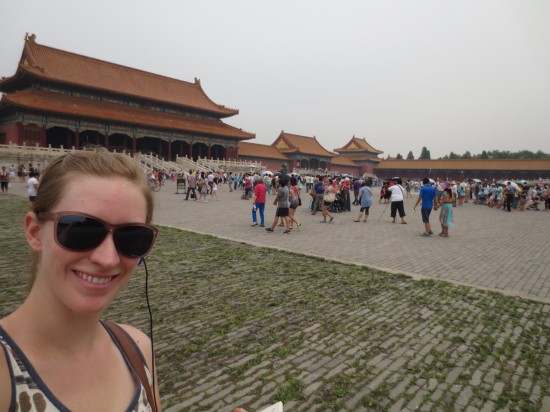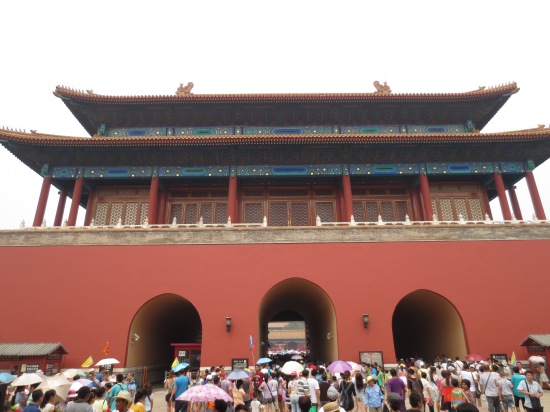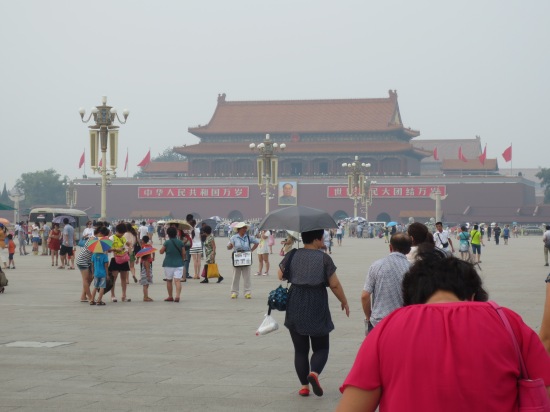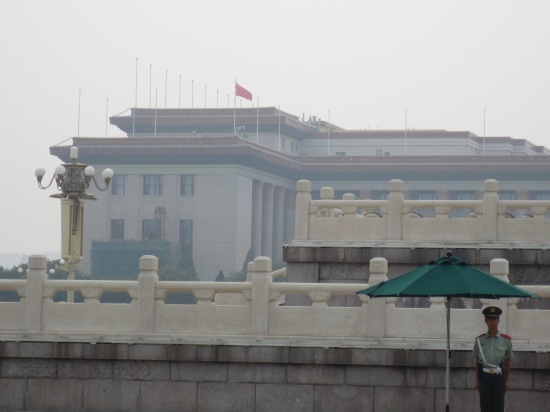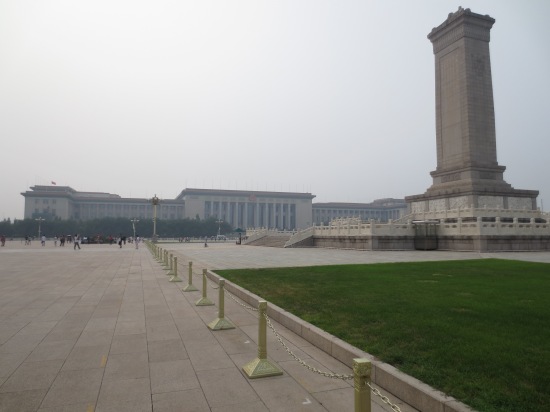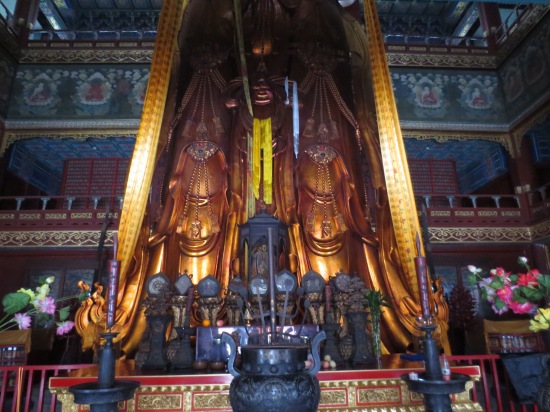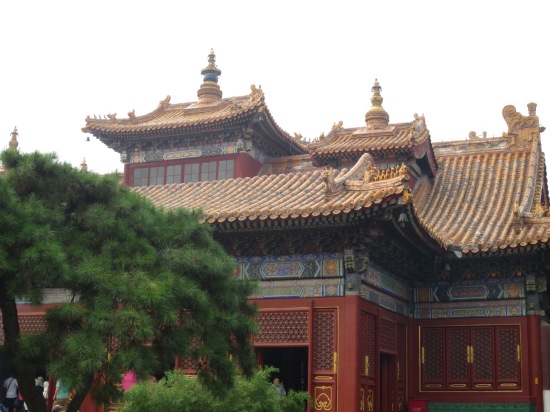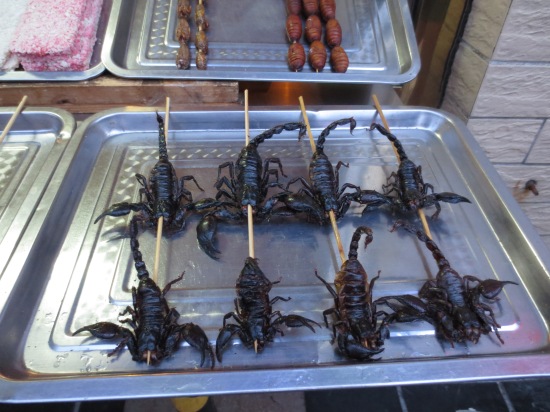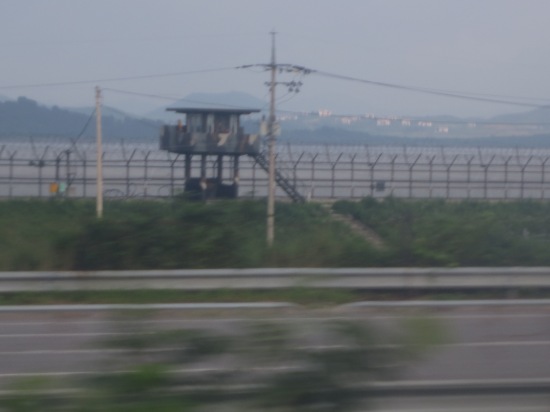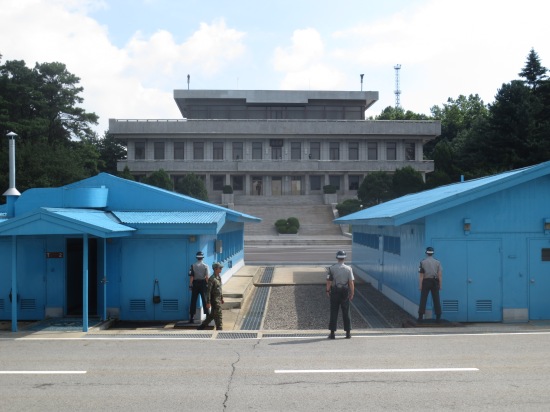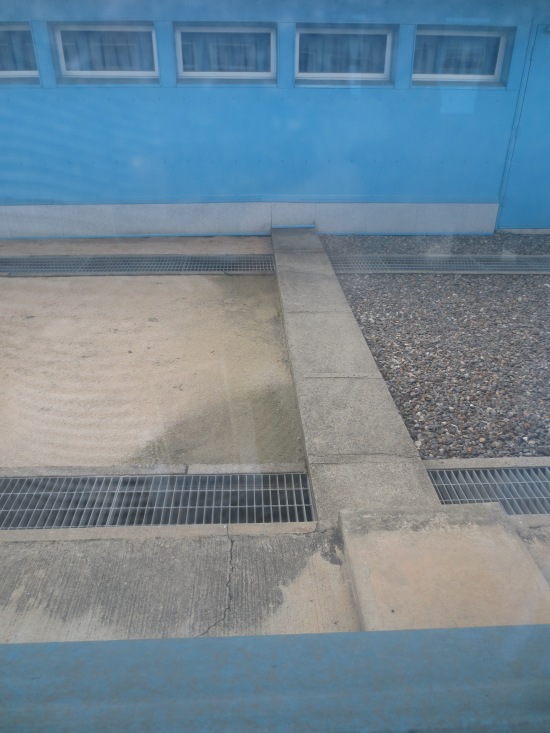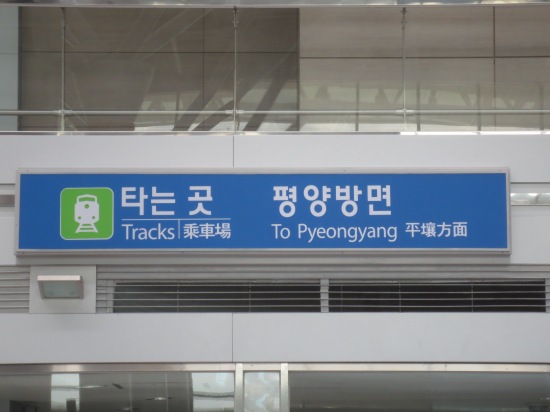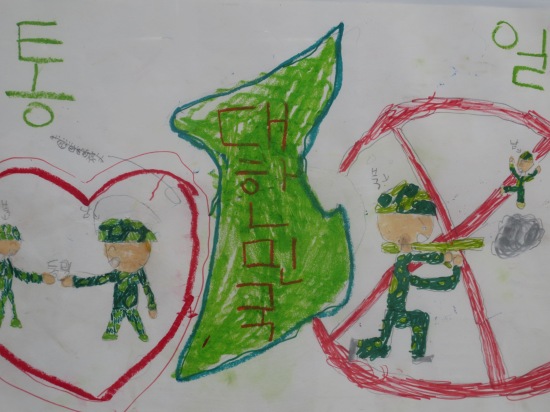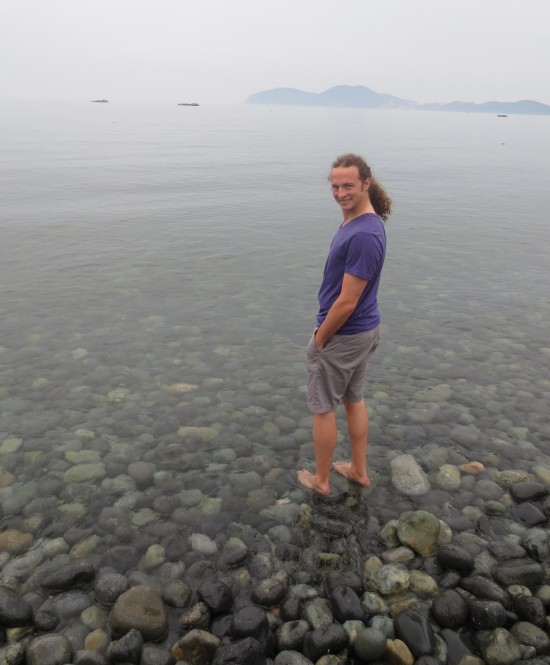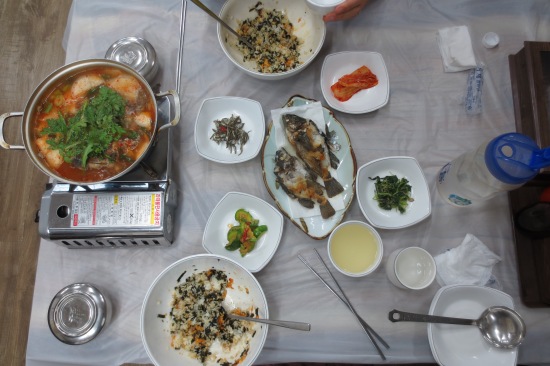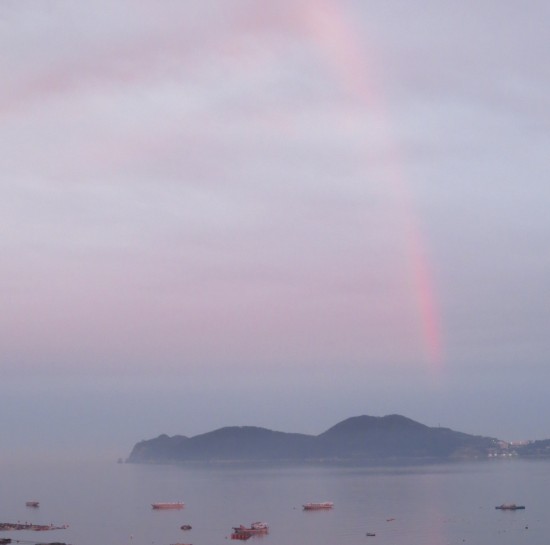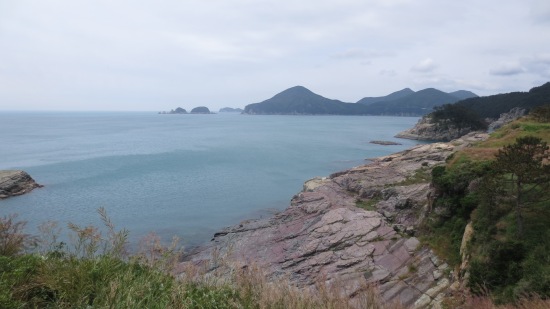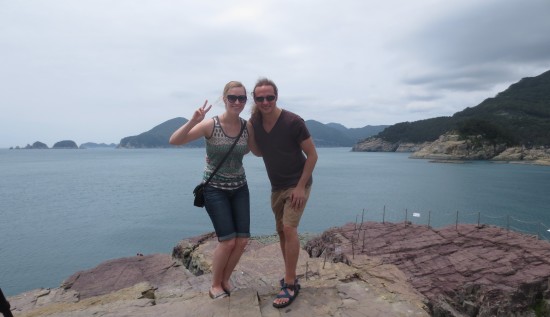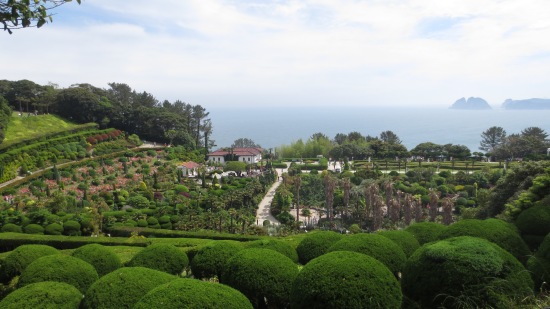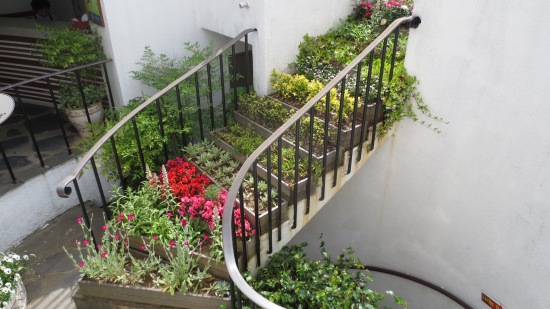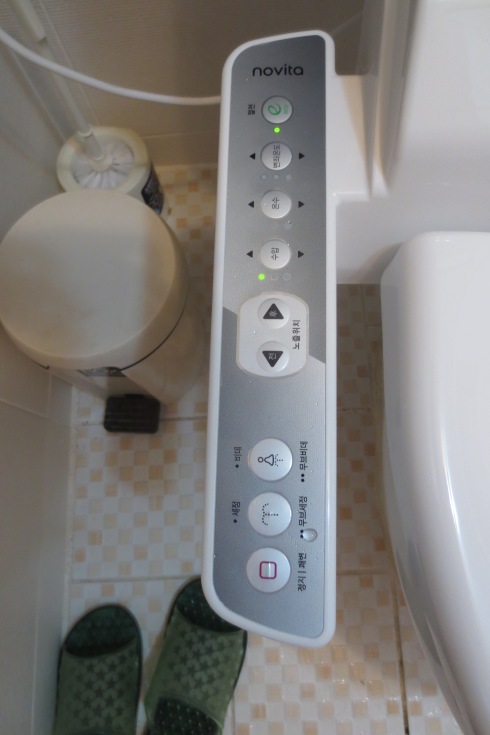When we visited Darjeeling six years ago, people constantly told us, “Oh you love it here? You have to visit Sikkim.”
Sikkim is a part of that weird region of India between Bangladesh, Nepal, and Tibet that looks like it shouldn’t be India. Resting in the shadows of the world’s highest mountains, this region of the Himalayas is culturally more Nepali than Indian (which it joined only 40 years ago). The Lonely Planet listed Sikkim as the #1 region to visit in 2014, and with good reason. It offers a tranquil respite to a the rest of India which tends to be hot, hectic and (sadly) polluted.
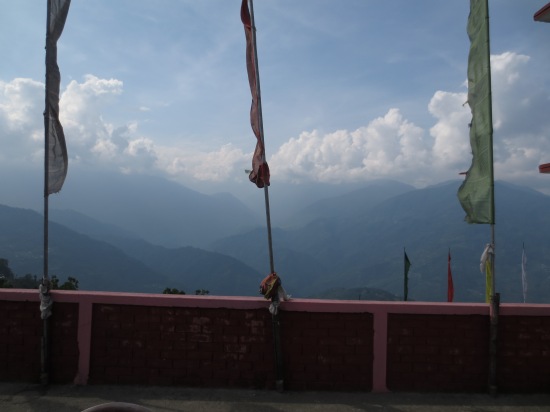
And if those clouds were to get out of the way, you’d see Kanchenjunga, the 3rd highest peak in the world
Getting to Sikkim proved to be an adventure in itself. We flew into Bagdogra Airport. From there we caught a taxi to Siliguri bus station for 350 rupees. Unfortunately, the bus to Pelling (our destination in Sikkim) only leaves once a day at 10:30. The tourist office recommended we hire a jeep. A kind older man at the jeep lot helped us figure out that we were at the wrong jeep lot and put us in bike rickshaws to the right jeep lot.
If an old Indian man tells you to get on the bike and go to god know’s where, you do it without question.
The shady man who ran the next jeep lot (and clearly trafficked drugs on the side) told us that the next jeep to Pelling left at 2:30, so we hunkered down for a few games of Rummy. We instantly became the primary entertainment for everyone else waiting for a jeep. 2:30 came and went. Around 3:30 they began loading up our jeep … with bushels of fish that were leaking blood everywhere. Let me tell you, nothing improves a 5-hour drive along dangerously narrow Himalayan roads like the overwhelming reek of dead fish. We finally rolled out around 4:30. The driver was kind enough to stop half-way in Jorethang, offering Sara and I some much-needed relief for our Delhi-belly. By then it was dark out, limiting our ability to see much of our surroundings–and considering the way the driver was ripping around the hairpin turns, I’m not sure that was much of a bad thing. Nevertheless, we made it to Pelling safe and relatively sound.
The next morning we awoke to a view of Kanchenjunga, the third highest peak in the world. After breakfast we went out looking for something to do. We noticed a Sikkimese man sitting outside of one of the tour booths. We approached him and asked him to take us to the Changey Waterfall. After some hesitation (which confused us) he offered to drive us there for 300 rupees. We negotiated him down to 200, to which he reluctantly agreed. We hopped in the jeep and sped off.
When we got to the waterfall, he went into a nearby shack and emerged a few minutes later with two bottles of HIT, a surprisingly-delicious Sikkimese beer. He handed the bottles to us and shooed us off towards the waterfall. We spent some time playing around in the water, taking pictures, and sipping the beer he gave us. We eventually figured out that today was Sunday, meaning that it was probably our driver’s only day off. Feeling guilty, we decided to find him and head back. When we entered the shack we found him at a table with four of his friends and three more bottles of HIT. They invited us to sit down, poured us cups of beer, and started talking to us. When we were about finished, a woman appeared from the back with four more beers.
It would have been rude to refuse.
A dozen-ish beers later our guide stood up and announced that we were going to the river. We piled back into the jeep and zipped off down the road again. For the most part everyone was enjoying themselves. However one of our guide’s friends was clearly displeased that these three random foreigners were crashing their party on his day off. He was polite enough but clearly disinterested in us. When we got to the river, we timidly waded in. Standing knee deep in the river, I plunged my hands in and splashed the clean, icy water on my face. A minute later, Mr. Not-Jazzed-About-The-Foreigners splashed a handful of water on my face as well. I returned the favor. The ensuing water fight broke the ice between us and him. We spent the next several hours laughing, swimming and soaking in the sun. It was the first time I had felt clean, cold and refreshed since arriving in India.

Dentam River
This spontaneous experience was the highlight of the trip for me. I usually feel obligated to partake in the significant historical and cultural experiences that a destination has to offer (Taj Mahal, Eiffel Tower, Times Square). However, my favorite experiences are always the ones where we make real connections with the local culture and have little to do with anything marketed to tourists.
We were a little disappointed when we woke up the next day to clouds and scattered showers blocking our view of the mountains. The town of Pelling offers amazing views and incredible hiking, but on a rainy day there’s not much to do. After putzing around for a few hours, we decided to head to Darjeeling a day earlier.
This was the right decision.
We found out later that the clouds and scattered showers were actually the precursor for the first monsoon of the season–a whole month earlier than anyone anticipated. (Monsoon season usually starts mid-June). The drive from Pelling to Darjeeling was already tricky enough. There were several times when our jeep required two or three attempts to make it up a hill, as the red dirt had turned to slick mud from the rain. One time we actually started sliding backwards down the hill, a startling prospect considering the 150-foot drop to our left. However, had we waited until the next morning to leave Pelling like we had originally planned, the rains would have certainly made the trip impossible. We would have been stranded and missed our flight home.

“Wait, we’re going to drive across that? I can feel the bridge moving under us. Are you sure this is safe?
We made it to Darjeeling only to meet another challenge. With the scorching temperatures across the rest of India (108°F in Kolkata, 114°F in Jaipur), May is high-tourist season in the comfortably mild Darjeeling. Our driver Roman ended up driving us all over the city looking for a hotel with a vacant room. We went down one street, then another, then another, looking anywhere for a spare room. As we turned on the last street, high above the city center, he turned to me and said, “Last chance. I have wife and son. If no hotel, you stay with me.” Thankfully, the second-to-last hotel on the last street had a room. We checked in, relieved to have a place to sleep.
The next couple days were lazy and restful. We did some shopping and tried (unsuccessfully) to stay out of the rain. At one point we got stranded in a cafe that was a 20 minute walk from our hotel. After hours of waiting for the rain to stop, we gave up and asked an employee for three trash bags. The entire shop watched with astonishment and amusement at us as we made our grand exit.
One final memory from Darjeeling. We went back to our favorite momo restaurant, located just off the city center where the jeeps leave in the morning for Tiger Hill. It’s hands down the best food in the city. After much anticipation and a little trepidation, I finally mustered up the courage to try the regional specialty: butter tea (or Tibetan tea). Made from salted, fermented yak butter, this beverage is essentially like sipping on a thick, rich cup of gorgonzola cheese. I realized that salted beverages are rare in western cuisine. In that sense, this drink takes a bit of mental preparation. However, I actually found it to be pretty tasty. Unlike other weird foods I’ve had (century eggs, baluts), I would voluntarily have this one again. It’s milder than your average blue cheese, so if you like strong cheese, be brave and try this drink.

Getting more momos and thukpa at our favorite restaurant. Notice the butter tea which I am about to partake in
After Darjeeling we headed back to the Bagdogra Airport and began our harrowing 36-hour journey back to Chicago. (We accidentally got stuck in one room in the Delhi airport for 8 hours. They wouldn’t let us leave. Sigh… you win again, Delhi. Every. Time.) It was unfortunate that we happened to be in Darjeeling and Sikkim for the unexpected monsoon. However the day we spent drinking and swimming in the Dentam River made the entire experience worthwhile. It’s certainly one that Sara and I will be telling stories about for years to come.
Visiting Sikkim:
Sikkim is considered a protected region. In order to visit there, you need to obtain a Restricted Area and Inner Line Permit. You’ll need a photocopy of your passport and a passport-sized photo when filling out the form. You can complete the paperwork at any Indian embassy, in several major cities in India, and in Siliguri, Bagdogra and Darjeeling. Visit the Sikkim Tourism website for more information.

